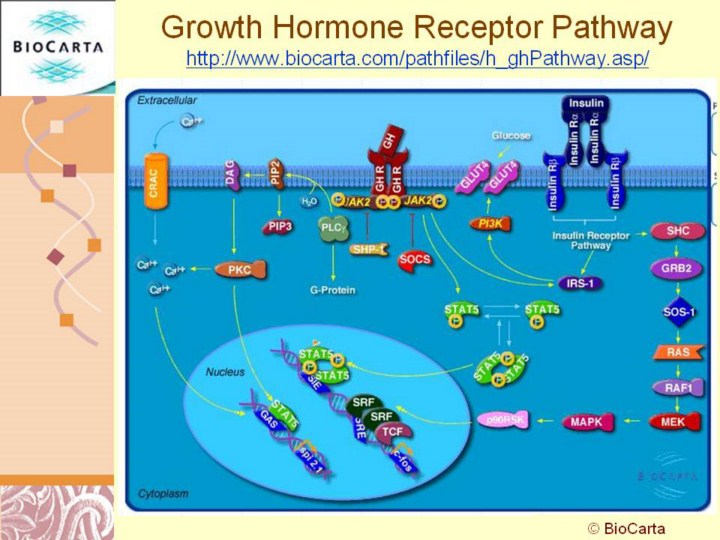| front |1 |2 |3 |4 |5 |6 |7 |8 |9 |10 |11 |12 |13 |14 |15 |16 |17 |18 |19 |20 |21 |22 |23 |24 |25 |26 |27 |28 |29 |30 |31 |32 |33 |34 |35 |36 |37 |38 |39 |40 |41 |42 |43 |44 |review |
 |
http://www.biocarta.com/pathfiles/h_ghPathway.asp/ Growth hormone plays a major role in regulating growth during childhood and adolescence and also regulates metabolism. Defects in growth hormone signaling can result in dwarfism and decreases in growth hormone levels with age have been suggested to play a role in the reduced function of some physiological systems. Growth hormone signals a response in cells through the growth hormone receptor, a member of the cytokine receptor gene family. Growth hormone causes the receptor to dimerize, activating the JAK2 protein kinase. The activity of JAK2 mediates many of the downstream responses to growth hormone through phosphorylation of STAT transcription factors, MAP kinases, other kinase cascades and molecules involved in metabolism like IRS-1. Factors like SOCS and SHP-1 appear to play a role in the down regulation of signaling by growth hormone and cytokines. |